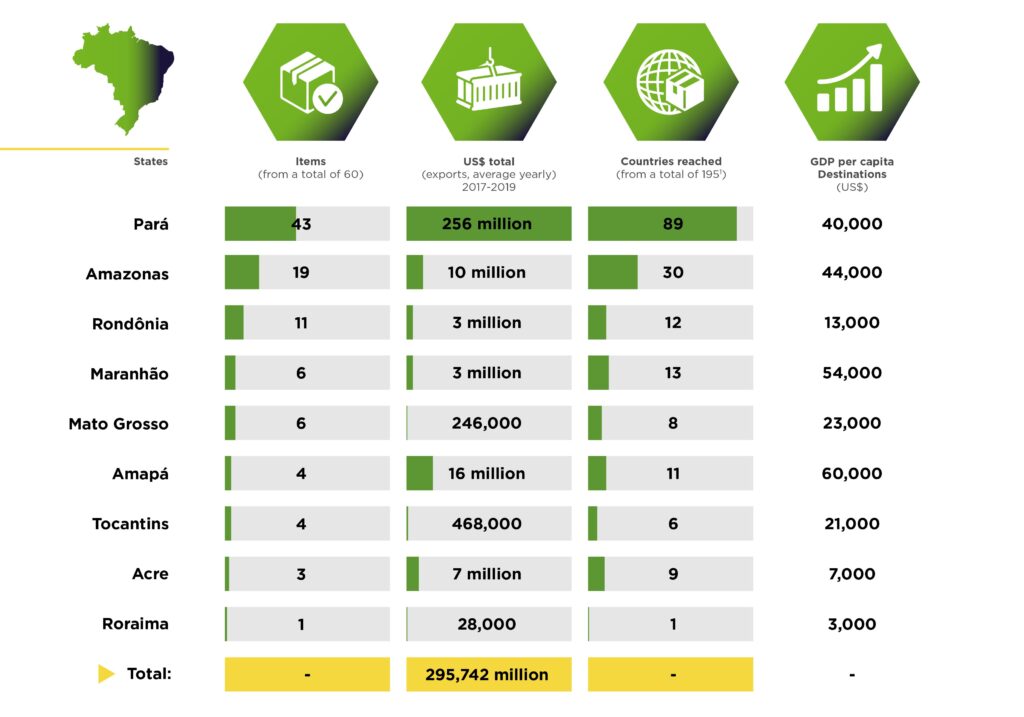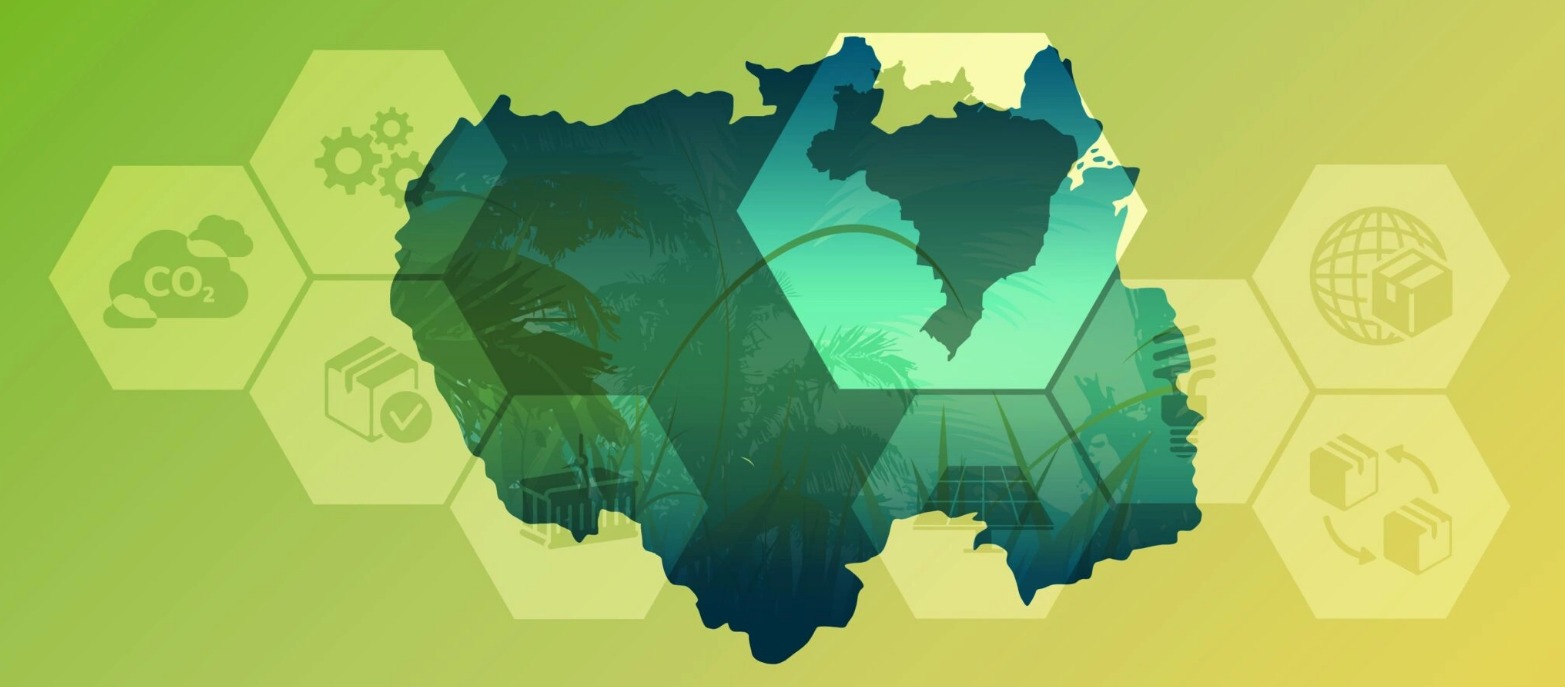Many times, when we talk about the Amazon, we tend to see its importance as the home of nearly half of the tropical carbon stocks in the world. But a detailed view shows that there is underlying economic potential to catalyze forest conservation and restoration with sustainable social and economic development activities through forest-compatible export diversification.
This is the case for some communities, associations, and businesses located in the Brazilian Amazon states (“Amazônia”), which already produce and export 60 forest-compatible products such as black pepper, shelled brazil nuts, fish swim bladders, hearts of palm, cocoa and fresh pineapple.
As explained by the Amazon 2030 Project (Coslovsky, 2021), whose methodology allowed to identify export potential in forest-compatible products as an alternative to promote regenerative and low-carbon development, forest-compatible products come from non-timber forestry extraction, agroforestry systems, tropical fisheries and fish farming, and tropical fruticulture.
This term also indicates that they are fresh or minimally processed, are typical of regions with a humid tropical climate, and can be produced in a climate and nature-positive way without harming the environment, generating deforestation, or expanding the agricultural frontier.
The IDB’s Trade and Integration Sector, with the support of Professor Salo Coslovsky, did further research to discover opportunities within Brazilian states.
Room for growth
The region has already begun to make some progress. Between 2017-2019, the export of the aforementioned 60 forest-friendly products generated US$ 295 million per year for Amazônia. It may seem like a significant number, but the opportunity is far greater: those same products generate US$ 160 billion a year in exports worldwide.
The market share of the Amazon region is small relative to the world’s production, not only on average across the entire basket of forest-friendly products but in practically all the individual products, ranging from 7% in the black pepper market to 0.01% in the cocoa market and 0.002% in the fresh pineapples market.
The only exception is in the Brazil nuts in shell market, where Amazônia has a 50% share. However, a more detailed analysis reveals that its firms dominate the least significant and sophisticated step of a larger value chain.
The role of Brazilian states
The recent analysis shows that the ability to export varies considerably between different Brazilian states from Amazônia. Businesses based in the state of Pará, for example, generate US$ 256 million per year by exporting 43 of the 60 forest-friendly products to 89 different countries. The state of Rondonia, on the other hand, obtains only US$ 3 million by exporting 11 products. This heterogeneity suggests that each state faces different challenges in expanding its exports.
Pará, for instance, must retain or expand its lead. Rondonia, on the other hand, must build its capabilities almost from scratch along all margins. In other cases, the difference between states is more subtle but no less significant. For example, both the states of Amapá and Amazonas export their products to relatively high-income countries. Still, Amapá exports large volumes of few products to few destinations (mostly açaí puree to the U.S).
For this reason, its main challenge is to diversify its portfolio and reach more countries without compromising on quality.
On the other hand, Amazonas exports smaller volumes of many different products to a large number of countries. Its challenge is to export larger volumes of the products it already exports.
Comparison of exports by State
Forest-Compatible Products

By analyzing the products exported by each state, we also identified a significant degree of territorial specialization. It is reasonable to assume that part of this specialization results from geographical and ecological differences between states. But an important part of this specialization is likely caused by barriers to disseminate skills and knowledge across states, and other aspects linked to market access.
Unlocking the export potential
The recent analysis shows that Amazônia already knows how to produce forest-friendly products with enough proficiency to compete successfully in the global market. It also confirms that this region is only scratching the surface of its potential, with substantial differences and disparities among states.
To unlock the potential, further analysis of the territory’s root causes is critical. This can be associated, for example, with low levels of capacity building (like education and skills), high costs associated with accessing markets (like broadband, electricity, transport, and logistics), low availability of export-related services (like training, verification/certification, packaging, and labels), and informality.
However, many of the production factors needed are already available in the region itself. The challenge is to mobilize them efficiently while maintaining environmental sustainability.
In conclusion, the sustainable promotion of forest-compatible products could help drive environmental sustainability. It could also provide better standards of living for small producers and local populations of a diverse region composed of more than 35 million inhabitants.


